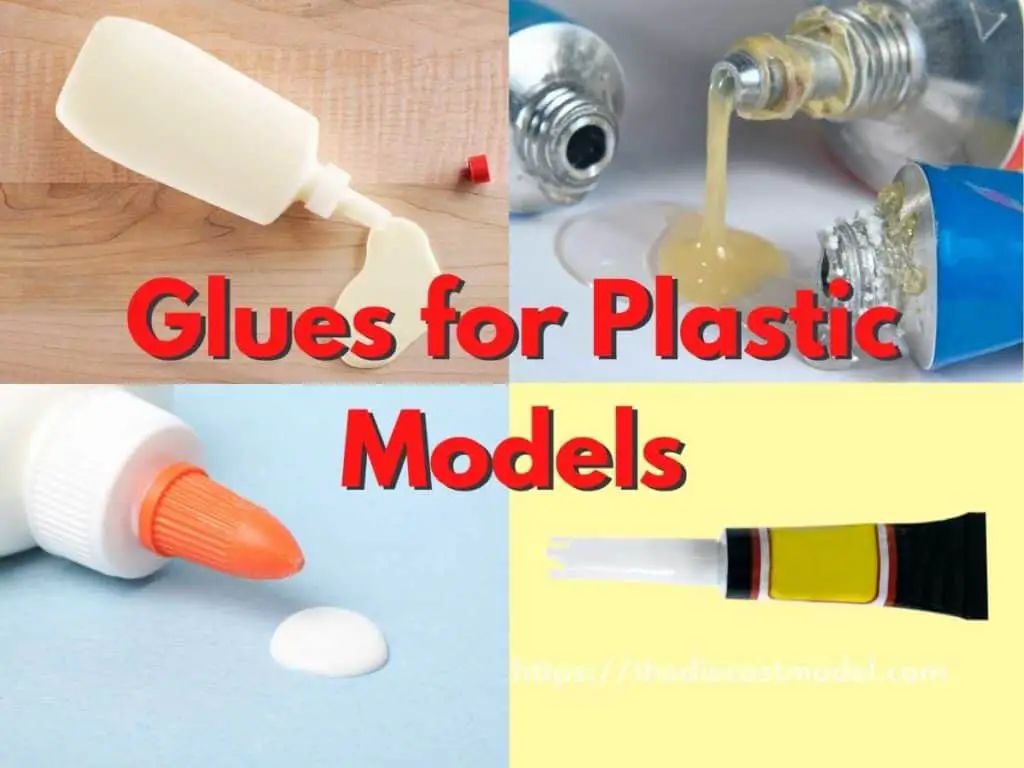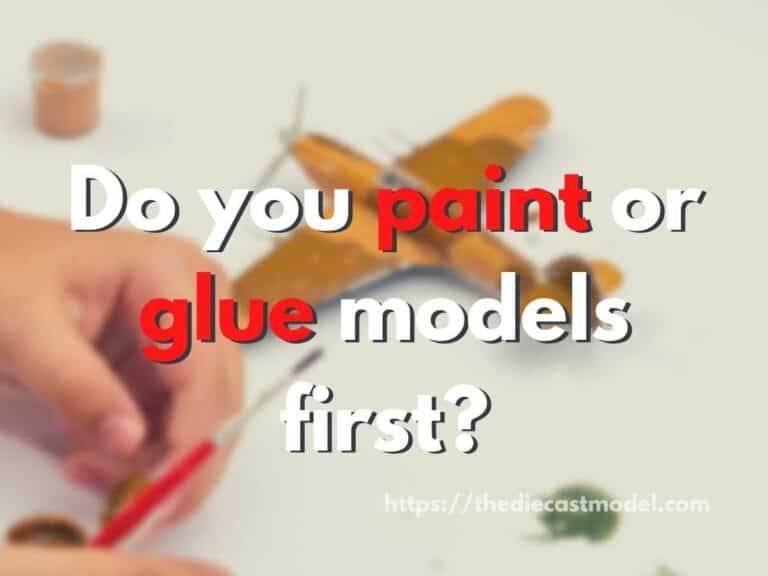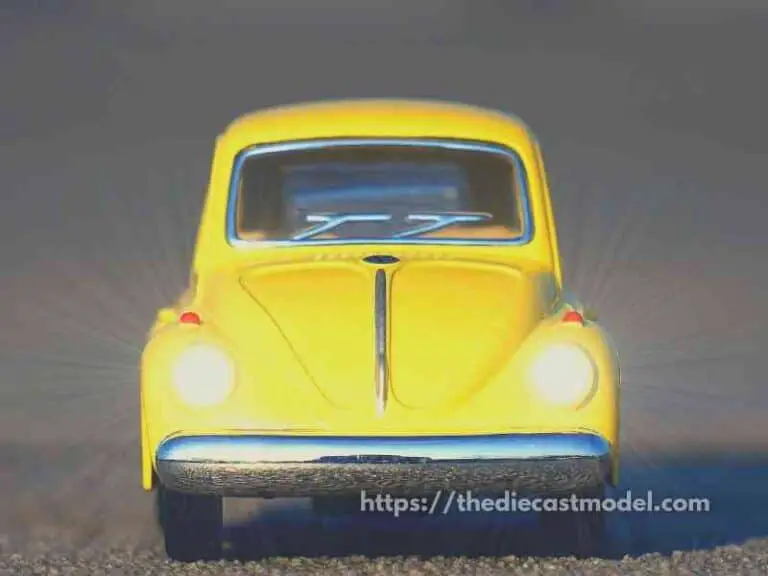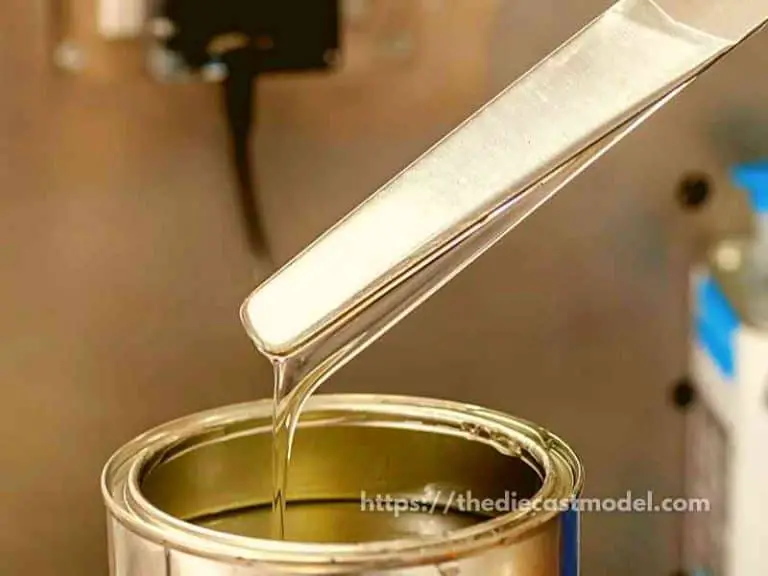All the Glues You Can Use for Plastic Models: Which is the Best?
For some people, building plastic models is an enjoyable hobby. However, these plastic modelers need to know how to use suitable glue to keep their project intact and not have it fall apart. With the variety of adhesives available, which is the best? Which is the best for beginners? I made a comprehensive guide introducing you to all the glues you can use to help you have an informed choice.
The glues you can use for plastic models are white glue, cyanoacrylate glue, polyurethane glue, epoxy glue, plastic cement, and canopy glue. These glues can bind plastics, and each has its own set of advantages and disadvantages.
This blog post not only introduces you to each glue you can use for plastic models, but I also placed what makes them good or bad. There is no perfect glue for all occasions. There are times when one suits better than the other. Thus, I carefully explained each of their strengths and weakness. Plus, I will give my take at the end of the post.

What kind of glue do you use for plastic models?
The kinds of glue you can use for plastic models are the ones that can stick models either by adhesion or welding. Glues that bind by adhesion are ordinary glue, super glue, epoxy glue, and canopy glue, while the one that binds by welding is plastic cement.
Here are the various glues you can use for your build.
1. White or Ordinary Glue
White or ordinary glue is one of the most accessible glues you can use for plastic models.
Chances are, you already have them in your home.
The good thing about white or ordinary glue is its flexibility, as you can use it not just for plastics but for paper, wood, and more.
Furthermore, they are easy to clean, remove, and don’t make a lot of mess.
Chemically speaking, white glue is also known as polyvinyl acetate glue or PVA glue. This is because its composition is mainly PVA.
The famous brand that uses white glue is Elmer’s glue.
While white glue is readily accessible and multipurpose, this is not recommended for plastic modeling for numerous purposes.
One of the main reasons this glue is not recommended is that it dries slowly. However, for modelers, this might allow them to change some things.
However, a slow drying glue can make the build prone to errors. Since the glue doesn’t dry quickly, it will be easy to mess up the build.
This is also why while it is very accessible, white glue is not recommended for beginners since it can produce a lot of errors in the finished product.
Another problem PVA glue has is its color upon drying. Generally speaking, modelers prefer glue that dries clear.
White glue usually dries cloudy, which can affect your model’s paint and look.
Thus, using white glue, while viable, is not a good option for modeling.
Furthermore, it doesn’t produce as strong bonds as the rest on this list.
With that, let’s move to the stronger glues.
Advantages of White or Ordinary Glue:
- Easily Accessible
- Cheap
- Easy to Clean
- Multipurpose
Disadvantages of White or Ordinary Glue:
- Dries Very Slowly
- Prone to Gluing Errors
- Dries Cloudy
2. Cyanoacrylate Glue
Cyanoacrylates are an excellent choice when binding plastic models. They dry fast, and most importantly, they dry strong.
Cyanoacrylate glues produce strong bonds, and another good news is that they’re also readily accessible.
Cyanoacrylate glues are also known as super glue. You can easily buy these glues almost everywhere.
To be honest, this could be the best glue, in my opinion, for beginner modelers. They are cheap, easy to find, and strong.
They can also function as fillers which is a huge plus.
However, cyanoacrylate has a set of problems that hindered me from recommending it to beginners.
One of the reasons I don’t recommend super glue for plastic models is that they are hard to clean up.
Thus, beginners will have a hard time applying them without any mess. This made me not recommend them for beginners.
Furthermore, while they are strong, they are weak when it comes to providing torsional strength.
Torsional strength is the ability of the glue to withstand twisting. While they are very strong, especially if you pull the bond, they will easily break if you decide to twist the bond.
Another problem super glue has on plastic models is that while using them as fillers, they don’t dry clearly. Plus, they usually produce rough bumps upon drying.
Thus, super glue users need to sand the models after gluing to make the surface smooth again.
Lastly, super glue dries cloudy. Again, this is not ideal, especially if the modeler is detailed.
Think of superglue as a strong general-purpose glue for plastic models. They can function as a strong glue and a filler. However, they won’t do the job as well as other adhesives.
Advantages of Super Glue:
- Easily Accessible
- Cheap
- Multipurpose
- Provides Strong Bond
- It can be used as glue and filler
Disadvantages of Super Glue:
- Weak Torsional Strength
- Messy
- Dries Cloudy
- Needs Sanding
I made a post comparing Super Glue to plastic cement. If you’re interested, you can find it here: Superglue vs. Plastic cement.
3. Polyurethane Glue
Polyurethane glue is a glue you can use for plastic kits. Furthermore, it is strong, easily accessible, and multipurpose.
The famous brand that uses polyurethane glue is Gorilla glue.
Gorilla glue is very strong and multipurpose. It’s good at spreading on the plastic’s surface and binding.
Furthermore, gorilla glue can also be used as filler.
However, generally speaking, gorilla glue is not recommended for plastic models for many reasons.
One of the reasons why gorilla glue or polyurethane glue is not recommended for plastic models is because it expands when drying.
Generally speaking, glues used for plastics shouldn’t expand or shrink upon drying. This makes sure that the build will be accurate without bumps that destroy its look.
Since gorilla glue expands, it isn’t ideal for projects that require precision, such as model gluing.
Furthermore, gorilla glue produces heat while drying. This causes the adhesive to foam which can make a mess when used.
Lastly, gorilla glue changes colors upon drying.
Advantages of Gorilla Glue:
- Easily Accessible
- Multipurpose
- It can be used as filler
- Produces Strong bond
Disadvantages of Gorilla Glue:
- Messy
- Changes Color
- Expands while drying
- Produces Foams
I made a more in-depth post talking about gorilla glue on plastic models. I believe you will find that interesting. You can find it here: How good is gorilla glue on plastic models?
4. Epoxy Glue
Epoxy glue is an excellent plastic glue since it produces a strong bond.
What separates epoxy glue from other cement types is its ability to produce a smooth and neat finish.
Thus, there is a chance you don’t need sanding if you’ve applied epoxy glue correctly.
Furthermore, most epoxy glues can be modified, and you can put colors and fillers for the glue.
You can quickly form it into whatever shape you like.
Thus, the possibilities are endless for epoxy glues when it comes to looks.
One of the brands that offer epoxy glue is Loctite.
However, while it produces good results, this is not an ideal plastic glue for multiple reasons.
Loctite isn’t ideal for plastic kit modeling because it requires specific mixing ratios and a learning curve to prepare the glue.
Using epoxy glue has a learning curve since it requires mixed ratios when used. This means if you mess with the mix ratio, the glue will also be useless.
The common thing I find with incorrectly mixed epoxy glues is that their bond tends to be brittle.
Furthermore, epoxy glue dries and cures slowly, which can be a bad idea if we don’t have enough time to wait.
You might be wondering why most of the glue I listed isn’t recommended for plastic models. Don’t worry because I saved the good ones for the sections.
Advantages of Epoxy Glue:
- Easily Accessible
- Multipurpose
- Can be used as Filler
- Produces Strong bond
- Very flexible with colors and additives
- Creates a smooth and quality finish
Disadvantages of Epoxy Glue:
- Has a learning curve: requires a certain mix ratio
- Dries and Cures Slowly
5. Plastic Cement
Plastic cement might be one of the most common glue you’ll see on experienced modelers, and there is a good reason why.
Plastic cement produces a strong bond and is made explicitly for plastic modeling.
The common brands of plastic cement are the Tamiya plastic cement, Mr.Hobby, and the Revell contact professional glue.
Plastic cement might be the best for plastic modeling for many reasons.
It dries clear, which is essential if you want a high-quality end product.
Furthermore, plastic cement has varieties you can choose from depending on your need.
For example, you can use the Tamiya regular cement when filling and when your build requires strong bonds.
For filling small cracks, Tamiya extra-thin cement does the job well.
Another reason why plastic cement is ideal for plastic modeling is its mechanism of action.
Unlike other glues, plastic cement bind by welding. This means it melts the plastic, so it binds with one another. Doing this produces a strong bond.
It’s no secret why many modelers prefer using plastic cement on their build. It’s made for professional and experienced modelers.
However, it doesn’t mean that plastic cement doesn’t have a set of disadvantages.
For one, plastic cement is made explicitly for binding plastics. This means it can’t be used on wood, paper, metals, or other objects, unlike general-purpose glues.
Furthermore, since plastic cement melts plastic, over-application can soften or break the plastic.
This is common for beginner modelers and why I don’t recommend using plastic cement immediately for beginners.
Usually, beginners panic when they see their plastic melt because they apply too much cement.
Another is that plastic cement can mix plastic colors, leading to a mess.
Since plastic cement melts and welds plastic, inexperienced modelers can make a mess when joining two plastics with a different colors.
These are some reasons why while plastic cement is one of the best and generally the modeler’s favorite, it is not always the best choice for beginners.
However, if you’re serious about plastic modeling, I recommend you use plastic cement and practice with easy model kits. Learning how to use this glue will take your build to the next level.
Advantages of Plastic Cement:
- Easily Accessible
- Strong bond
- Good for filling cracks
- Dries clearly
Disadvantages of Plastic Cement :
- It can only be used on plastics
- It might be hard to use for beginners
- Quite expensive
There are generally two types of plastic cement, the regular and the extra thin. If you want to know what to use, you may check this post: Regular Plastic Cement vs. Extra Thin Cement.
6. Canopy Glue
Canopy is the glue made explicitly for airplane models. Think of canopy glue as upgraded white glue. It produces stronger bonds and is easy to use.
The only problem with canopy glue is its accessibility. While you can easily buy them online, they are only available in aircraft model stores and selected hobby stores.
On cleaning, canopy glue is also easy to clean since it’s water-based. Simple wet cotton or q-tips can do the job well. A few hours after the glue has dried, you can quickly soften it by dipping the plastic in the water.
This leaves more space for beginners to clean their models.
However, once it is thoroughly dried, which means it has been dried for days, it will be hard to soften the glue.
The only disadvantage of using canopy glue is that it sometimes interferes with the painting process, mainly if the paint uses a water-based solvent.
Thus, Canopy glue is the best plastic glue for beginners. You can easily clean and adjust it if you find errors, and it forms a strong bond once thoroughly dried.
Advantages of Canopy Glue:
- Strong
- Easy to Use
- Not Messy
- Specifically made for modeling
Disadvantages of Canopy Glue:
- Hard to buy from local stores
What’s the best glue to use for plastic models?
The best glue to use for plastic models is plastic cement. Plastic cement can be used as glue and as a filler for cracks and holes. Furthermore, plastic cement dries clearly and doesn’t expand when drying. These reasons make plastic cement a popular choice for experienced modelers.
Since plastic cement is made explicitly for plastic models, it is one of the most common things you can find on experienced modelers’ kits.
However, it can be challenging for beginners to use this glue since some plastic cement melts plastics and dries in a few seconds.
Thus, it is not the ideal glue for beginners.
However, if you want to be good at modeling, learning how to use this glue is a must since it produces the best results.
No wonder it is a must for modelers.
What’s the best glue for beginner modelers?
The best glue for beginner modelers is canopy glue. Canopy glue not only produces strong bonds but is also easy to clean. Furthermore, it doesn’t melt plastics. Canopy glue was initially made for plane models and slowly became a favorite due to its performance. However, experienced modelers should go for plastic cement.
The only thing that makes canopy glue not ideal is its availability.
As I said, you can only get this glue online, in airplane kit stores, or hobby shops.
That’s also why I think it doesn’t have the popularity it deserves.
Canopy glue is water-soluble. Thus, beginners can easily clean the glue if they make a mess.
Furthermore, even if it has dried for hours, you can quickly soften the glue by dipping it into water.
Thus, beginners would benefit from having this glue.
However, since it can be hard to have canopy glue, beginners can still opt for plastic cement, which I believe is still superior when it comes to results.
But always be careful when applying plastic cement since it welds and melts plastic.
What’s next? Ready to start building? Don’t know what kit to buy? How about learning about Airfix? I made a blog post on what makes Airfix good for beginners and experienced modelers. Plus, you don’t need to worry about finding glue since they offer starter kits that include essential glue, paint, and brush. You can check my post to learn more: Are Airfix kits good?







